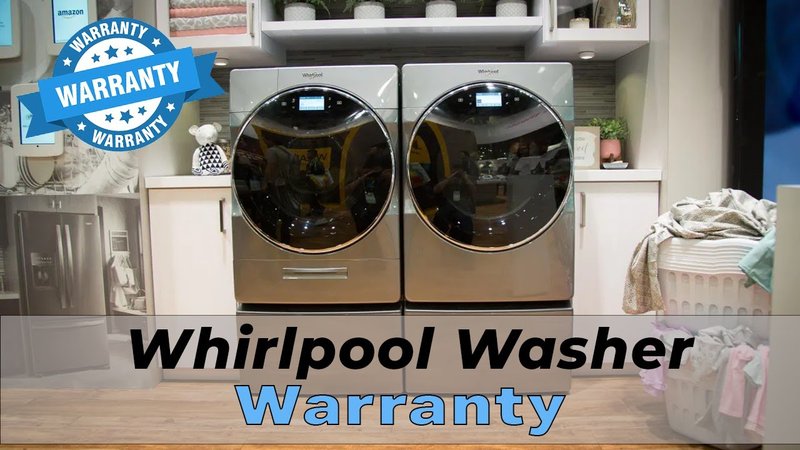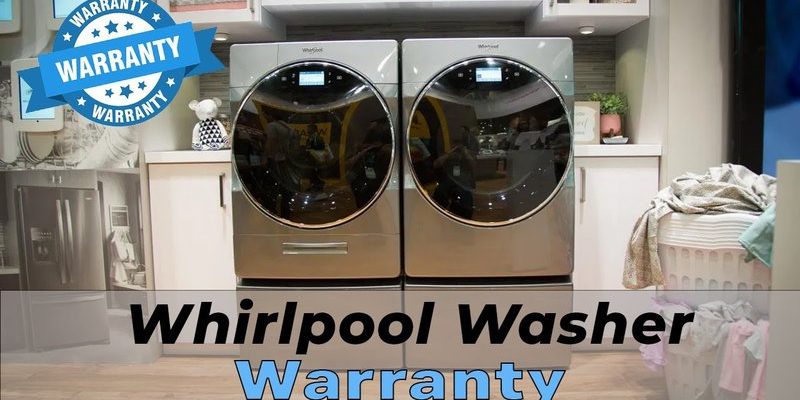
Think of a warranty like the appliance’s report card for reliability. It tells you how long the manufacturer is willing to back up their product when something goes sideways. Whirlpool, being a big player in the laundry game, offers a warranty period that covers parts and possible repairs—but the specifics can feel a bit like decoding a secret language. Let me explain what you can generally expect and why it matters for your peace of mind.
Understanding The Basics Of Whirlpool’s Standard Warranty
When it comes to warranties, Whirlpool’s approach is pretty straightforward, but it’s good to know the details. Typically, Whirlpool laundry appliances come with a **one-year limited warranty**. What does that mean? For an entire year after you buy your washer or dryer, Whirlpool promises to repair or replace any part that malfunctions due to manufacturing defects—without charging you for the parts or labor.
This one-year coverage usually starts from the date of purchase, so keeping your receipt is crucial. It’s kind of like a safety bubble around your new appliance while it settles into your home. If something breaks right out of the gate, you’re covered. However, this limited warranty doesn’t cover issues caused by misuse, accidents, or natural wear and tear—just the stuff that’s the manufacturer’s responsibility.
Beyond that first year, things get a bit more specific. Some Whirlpool models offer extended warranties on key components, like the motor or drum, but these vary depending on the model and purchase location. So, if you want that extra layer of protection, it’s worth checking the specific manual or talking to the seller.
What Does The Warranty Actually Cover?
You might be thinking, “Sure, one year sounds fine—but what exactly does this warranty fix?” Here’s the thing: the Whirlpool laundry appliance warranty generally covers **parts and labor for repairs** related to defects in materials or craftsmanship. For example, if your washer’s drum stops spinning because of a faulty motor or if your dryer’s heating element fails due to a manufacturing glitch, Whirlpool steps in.
It’s important to know that the warranty doesn’t cover everything under the sun. Things like rust, cosmetic damage, or issues caused by improper installation usually fall outside the warranty’s scope. Here’s where your appliance’s manual becomes your best friend—always read it to understand what Whirlpool expects from you, especially in terms of maintenance.
Sometimes, people assume the warranty will cover things like syncing or resetting issues with smart-enabled appliances, but honestly, those usually aren’t covered because they’re often user errors or network problems. Still, Whirlpool does offer support to help you troubleshoot these hiccups—though the warranty won’t pay for technician visits in those cases.
How To Register Your Whirlpool Appliance Warranty
You might be wondering if your warranty kicks in automatically when you buy your Whirlpool appliance or if you need to do something special. The good news is, **your warranty generally starts right at purchase**, but registering your product with Whirlpool can make the process smoother if you ever need service.
Registering your appliance is pretty simple and gives you a few perks. You’ll get reminders about maintenance, important updates, and quicker access to customer support. It’s like giving Whirlpool a heads-up that you’re part of the family. You can usually register your appliance online by entering the model and serial number—usually found on a sticker inside the door or on the back.
If you skip registration, you’re not losing your warranty rights, but when it comes to syncing up repairs or troubleshooting via Whirlpool’s customer service, having your details on file definitely speeds things up. So, it’s a small step that can save you headaches later.
Extended Warranties And Protection Plans: Are They Worth It?
Here’s where things get interesting. The standard warranty on Whirlpool laundry appliances is solid but limited to one year for the most part. If you’re the kind of person who wants a little extra cushion after that first year, you might consider an extended warranty or protection plan.
These plans can cover repairs, parts, and sometimes even unexpected issues like accidental damage or power surges. They’re usually sold by retailers or third-party providers, and costs vary. Honestly, whether you should invest in one depends on your comfort level with risk and how much you rely on your appliance.
Think about it like insurance for your laundry sidekick. If you hate the idea of surprise repair bills and want a quick fix with a phone call, an extended warranty might be worth it. On the flip side, some folks prefer to save that money and hope for the best, especially since Whirlpool appliances are generally reliable during that first year.
Common Warranty Issues And Troubleshooting Tips
Sometimes, even with a warranty, things can feel tricky—maybe your appliance won’t sync with the remote app, or you’re not sure if a problem is covered. Here’s the thing: warranties cover breakdowns caused by manufacturing defects, not user errors like incorrect installation or battery failures in remotes.
If you run into issues, try some basic troubleshooting first. For example, if your Whirlpool washer or dryer isn’t communicating with its remote control, try resetting or re-pairing the devices. Checking batteries or ensuring the appliance is properly plugged in can save you a technician visit.
If troubleshooting doesn’t work, grab your warranty information, model number, and purchase receipt, then contact Whirlpool’s customer support. They’ll guide you through whether your issue falls under warranty coverage and what next steps to take.
How Whirlpool Warranty Compares To Other Brands
Wondering how Whirlpool’s standard warranty stacks up? Let me give you a quick peek behind the curtain. Most major appliance brands, like LG, Samsung, and GE, offer a standard **one-year warranty** on their laundry machines, making Whirlpool pretty typical in the appliance world.
Some brands offer longer warranties on specific parts—like a 10-year motor warranty—but Whirlpool’s focus tends to be on that one-year comprehensive coverage. What makes Whirlpool stand out is their wide service network and generally reliable build quality, which combined with the warranty, creates a solid user experience.
If you’re debating between brands, don’t just look at warranty length. Think about service availability, ease of getting parts, and customer service reputation. Warranty is important, but it’s only one piece of the puzzle.
Tips For Maximizing Your Whirlpool Warranty Benefits
Here’s a little insider advice—using your Whirlpool warranty is smoother if you keep a few things in mind:
- Keep your purchase receipt and warranty documents safe. Without proof of purchase, warranty claims can get complicated.
- Follow the user manual’s maintenance guidelines. Skipping recommended care can void your warranty.
- Register your appliance online. It speeds up support and helps with recalls or updates.
- Don’t try to fix major issues yourself. Using unauthorized repair services could void the warranty.
Honestly, these small steps can save a lot of frustration. Warranties are there to protect you, but they work best when you give them a little TLC too.
“A warranty isn’t just a piece of paper—it’s a promise from the manufacturer. Treat it like your laundry appliance’s health insurance, and you’ll get the most out of your investment.”
At the end of the day, knowing how long the standard warranty for Whirlpool laundry appliances lasts helps you plan, troubleshoot, and decide if extra coverage is right for you. With a typical one-year limited warranty in place, you get a solid safety net as you power through the spin cycles and folding marathons that come with laundry day. Now, you can wash those clothes with a bit more confidence, knowing your trusty Whirlpool is backed by a warranty that has your back.
